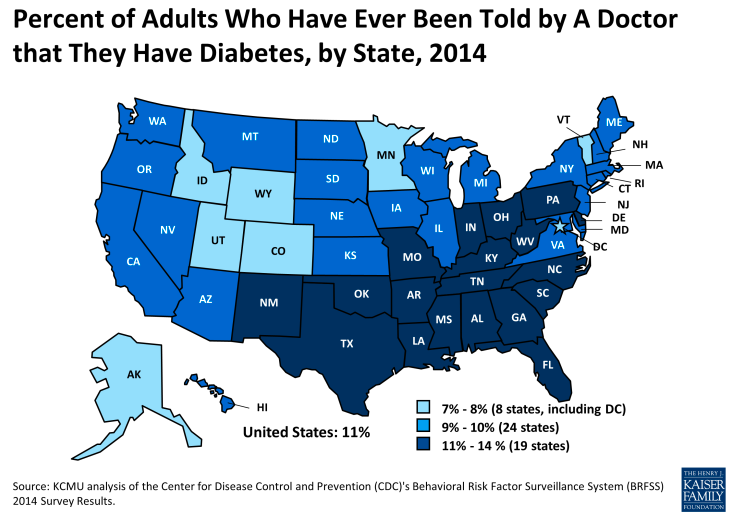This month, we mark American Diabetes Awareness Month. And it’s more important than ever that we do so. In tandem with the rise of an obesity epidemic and the general aging of our population, the incidence rate of diabetes in the United States has risen nearly six-fold since 1960.
Most of that rise has taken place within just the past 20 years. The percentage of Americans with diagnosed diabetes (marked by chronically high blood glucose levels and an insulin insufficiency) has more than doubled since 1996, per a paper published earlier this year by the Centers for Disease Control and Prevention (CDC).
Exercise and dietary moderation the best methods for ensuring you’ll live well into the future.
Although some of that may be attributable to more effective screening methods doing a better job of identifying diabetes in patients, most health experts agree that increasingly sedentary lifestyles and poor diet choices are largely to blame for the diabetes trend.
According to the Washington Post, if the current trend holds, more than one in three Americans may have diabetes by 2050. That’s an astoundingly alarming projection.
Diabetes in and of itself is the seventh leading cause of death in the United States and is associated with increased risks of heart attacks, strokes, high blood pressure, kidney failure and other serious conditions.
Cincinnati lies along the edge of the “Diabetes Belt”
Seniors in the South and Midwest — including the Cincinnati area — are more likely to develop diabetes than seniors elsewhere in America.
Indeed, the CDC has identified a “Diabetes Belt” that runs roughly from East Texas northeast to Pennsylvania, along the Appalachian Mountains, and which includes the Southeastern coastal states.

The reasons for diabetes’ concentration in those areas are fairly tangled. Lower overall educational levels, higher poverty rates and unhealthy traditional regional diets among the populaces of Diabetes Belt counties all likely contribute to higher diabetes rates therein.
Poorer, less-educated people tend to rely on cheaper, processed foods for much of their dietary intake. They’re more likely to work more than one job to make ends meet and have less time to prepare healthy food on their own. Moreover, Southern and Midwestern cuisine tends to be heavy on fried foods and fatty meats.
Perhaps most importantly, though, people in the Diabetes Belt tend to live in rural areas where they have less ready access to affordable, preventative medical care.
Lower your diabetes risks by making simple lifestyle choices
Here in Cincinnati, there are plenty of resources for diabetes screening and management. But seniors who make healthier lifestyle decisions can lower the risk of developing Type II (adult onset) diabetes:
1. Lose weight.
Maintaining a healthy body weight dramatically reduces your risk of developing Type II diabetes. Even small weight losses are beneficial.
2. Cut out highly processed foods and sugary drinks.
Shifting your diet away from one that is mostly carb-based toward one that is heavier on lean proteins, fresh fruits and vegetables and low-sugar beverages can help you manage your weight and reduce your average blood glucose level.
3. Exercise daily.
Moderate physical activity can help you maintain a healthier body weight and help your body to better regulate its serum glucose level.
4. Drink more water, eat more fiber.
Water and fiber both help you to maintain a “full” feeling in your stomach, so you’ll be less likely to overeat. There is also strong evidence that maintaining proper hydration and eating a low-sugar, fiber-rich diet can help your body to better regulate its blood glucose level.
5. Cut down on your alcohol consumption.
Alcoholic beverages are carb-heavy and consuming them can spike your blood sugar. Drinking causes many people to experience “the munchies,” so it can promote overeating. And heavy drinking damages the pancreas, which produces the insulin your body needs to regulate blood sugar.
6. Have your A1C levels checked yearly.
You should already have a primary care physician (PCP) to manage your care (if you don’t, you need one, stat!). Seeing your PCP for regularly scheduled checkups and allowing him or her to draw blood to check your A1C level (a measure of your body’s insulin resistance) can provide more warning time for you and allow you to take pre-emptive diabetes management steps if things are trending in the wrong direction.
This American Diabetes Awareness Month, take steps to reduce your risk!
Diabetes is a deadly disease. But it’s often preventable. Use the tips above to make healthy lifestyle changes and lessen your risk.
And remember — especially as we head into the winter holidays — that exercise and dietary moderation the best methods for ensuring you’ll live well into the future!












